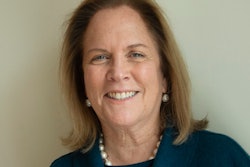I love America more than any other country in the world and, exactly for this reason, I insist on the right to criticize her perpetually. –James Baldwin
The momentum of social and racial justice fueled by recent events finds us at a significant crossroad with divergent paths—one path opening to opportunity and one leading to entropy. The approach we choose to follow will affect society and the lives of many for generations to come. Should we choose the way of opportunity, we must seriously grapple with the debates and our commitment to preserving a true democracy. Should we select the other, we accept the deterioration of hard-earned civil rights—choosing to abdicate to systems, laws, and politics that have historically disadvantaged those unable to make a living wage and people of color. As deans of educator preparation programs who work closely with the nation's two largest school districts (New York City Department of Education and Los Angeles Unified School District), we understand the relevance of education. It is the core vehicle for liberatory practice and for championing American democracy. If education is the road to national mobility, and we believe it is, we must preserve the mechanisms and freedoms to critique and examine the governing structures of our society. Dr. Jacob Easley
Dr. Jacob Easley
Higher education and P-12 educators would be hard-pressed not to have encountered invitations to earn a DEI badge or participate in DEI forums. Some institutions of higher education have also created degree program offerings under the DEI banner. At the same time, proposals and approaches to teaching Critical Race Theory (CRT) and anti-racism have faced opposition, mainly by conservative-led media and legislative forces at the federal and state levels. Both DEI and CRT offer specific values and limitations in the pantheon of social justice. While DEI reflects a broad-spectrum concept influencing policies and practices that foster representation and participation among diverse groups of peoples, it runs the risk of diluted impact, being all things to everyone. CRT inherently examines the judicial, ideological, political, and economic structures that systematically disenfranchise racially minoritized groups. As such, its central focus on institutional racism and critique of structural inequities conjures a counter-narrative to the American myth of a great democratic nation born out of the success of immigrants who overcame hardships. This myth champions rugged individualism and is primarily race- neutral. The counter-narrative makes many uncomfortable, particularly gatekeepers of the structures that benefit people of certain cultural and economic capital while disenfranchising the majority of the nation's population.
As P-12 school and university leaders begin a new academic year at a crossroads, we question the popularity of DEI as fetishism and faddism and the political courage for institutions to engage critically with historical and contemporary matters of racial equity. We recognize the importance of DEI, which has evolved from prior social and curricular trends addressing multiculturalism and multicultural education. As both NYCDOE and LAUSD, like many universities, have experienced an increase in diverse student populations due mainly to changing demographics and globalization, both remain highly segregated. Notably, the state of New York ranks highest in segregation for African American schoolchildren, and California ranks the highest in segregation for Latinx students.  Dr. Kimberly White-Smith
Dr. Kimberly White-Smith
Following our concerns for fetishism, we question the quality and scope of DEI training for adults, specifically, and DEI curriculum integration for educator preparation and P-12 student learning. We do not profess a singular method to counter the dilution of DEI to be all things to all people and organizations. We do, however, suggest a few parameters for educators and their institutions. First, instructional commitment to social and political change that champions diversity of representation is a must. This idea necessitates the full participation of diverse community members across all levels of the organization. Second, we encourage an ongoing examination of policies, procedures, and funding practices (particularly those thought to be race and culturally neutral) for equitable outcomes across diverse community groups. For example, the conditions for access to the teaching profession and hiring practices are deemed mainly race-neutral. Yet, for the state of New York, 80% of the teacher workforce is white while 40% of teachers in NYCDOE are of color; the percentage of its student population is 80% non-white. Third, we advocate for curriculums and student engagement activities that embrace multiple perspectives and narratives culturally responsive to societal diversity—curriculums for racial and social justice.















